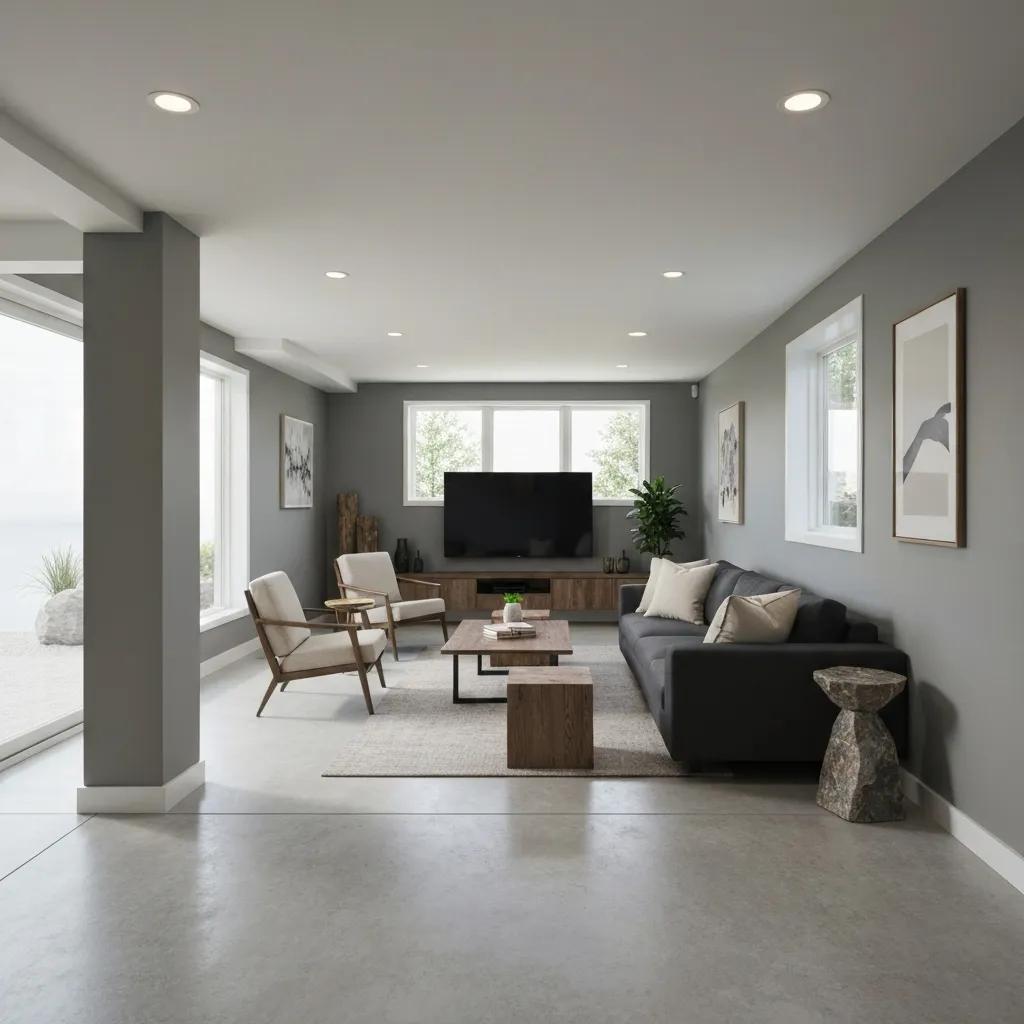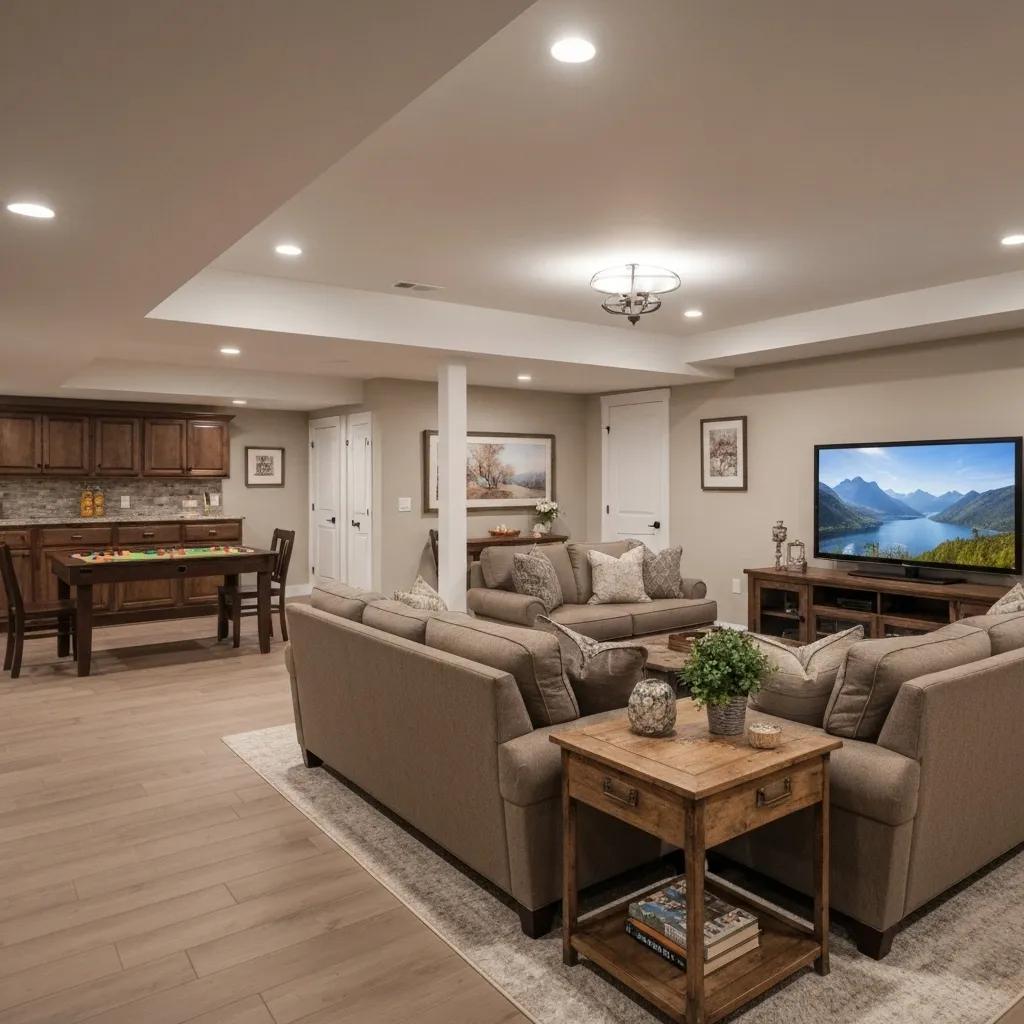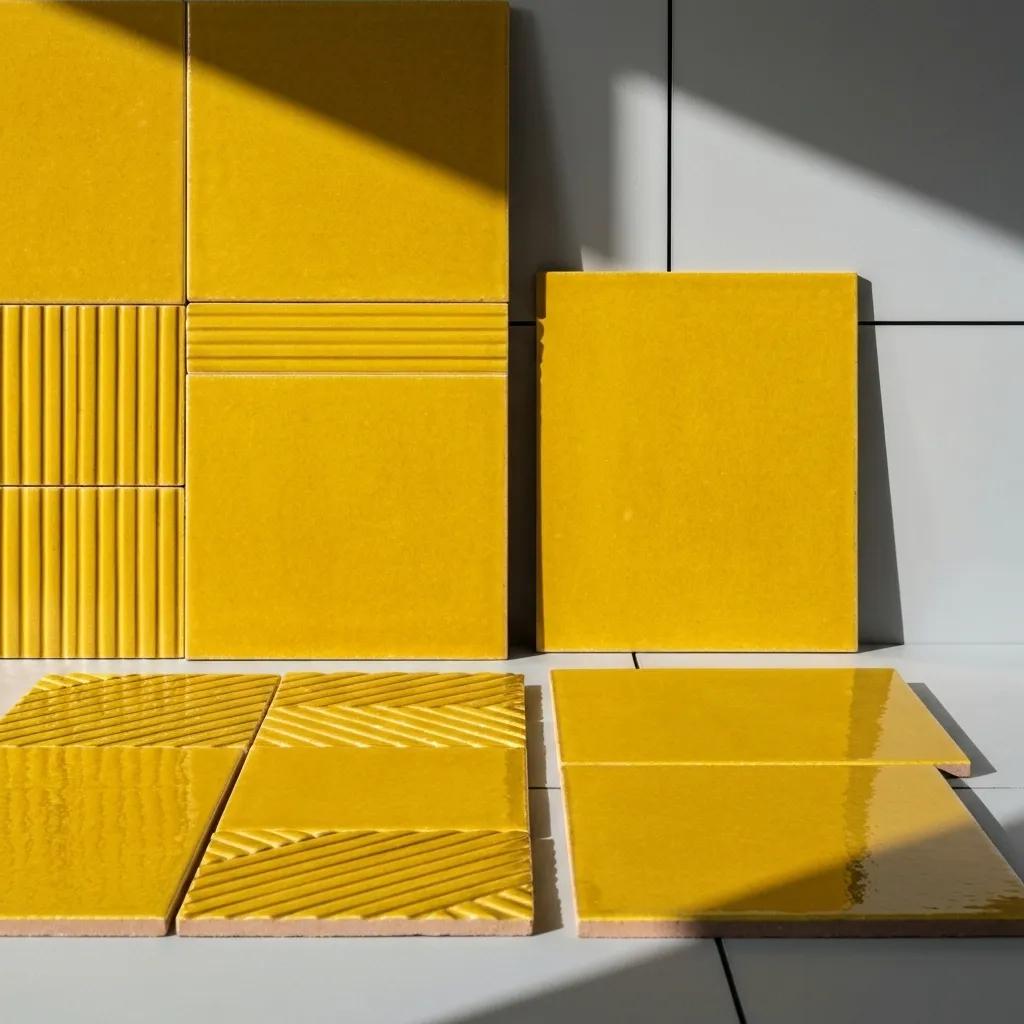
Composite Decking vs. Wood: Why Composite Wins
Composite decking has increasingly become the preferred choice over traditional wood options due to its durability, low maintenance, and long-term cost benefits. Homeowners, particularly in regions like Des Moines, Iowa, are evaluating decking alternatives that reduce the expense of constant repairs and the issues of termite damage, mold growth, and water damage. Composite materials, which are a mix of recycled fibers and plastic, offer a sustainable and weather-resistant solution that promises a longer life expectancy than softwood or hardwood options. While wood decking provides a classic look with its natural grain and warmth, composite decking often wins out when evaluating factors such as maintenance requirements, resistance to pests, and overall investment value. This article thoroughly examines the composite decking advantages over wood options through the lens of durability, installation processes, aesthetic versatility, safety features, environmental impact, and care practices. In doing so, it highlights not only the practical benefits but also the
like recycled content and sustainable sourcing practices associated with composite materials. By carefully comparing these two decking options, homeowners can make an informed decision that fits their budget, style, and long-term home improvement goals.Transitioning into the detailed comparisons, the following sections analyze the multifaceted benefits of composite decking.
Understand the Benefits of Composite Decking Over Wood Options
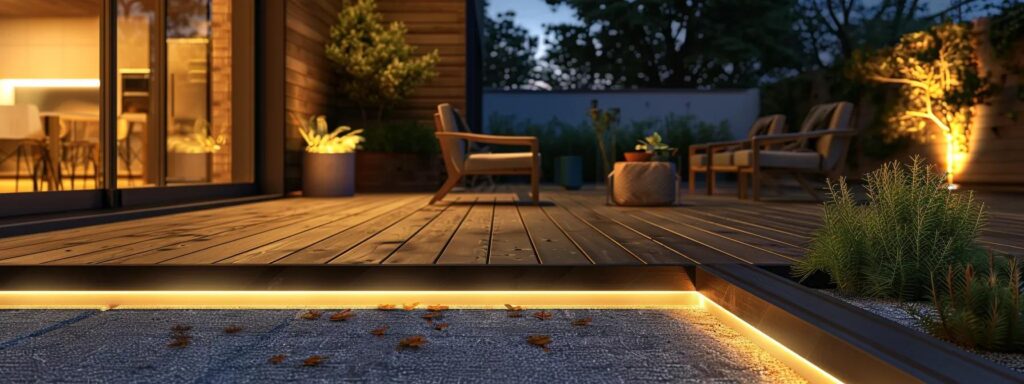
Composite decking offers significant advantages over traditional wood when compared across various performance factors. The first benefit is its impressive durability and longevity in the face of harsh weather conditions such as heavy rain, intense heat, and prolonged moisture exposure. Studies have shown that composite decking can last up to 25–30 years with minimal fading or warping compared to wood, which may only last 10–15 years before severe weathering necessitates repair or replacement. composite decking vs wood deck pros and cons explained
Examine Durability and Longevity in Various Weather Conditions
Composite decking is engineered to be robust against fluctuations in temperature, exposure to ultraviolet light, and high humidity. Unlike natural wood, composite materials do not absorb moisture, thereby reducing the potential for warping, cracking, or splintering. For example, while wood decking can succumb to termite attacks and rot, composite decking provides a consistent performance regardless of seasonal changes. Independent lab tests have identified that composite materials maintain up to 95% of their original color over extended periods when exposed to harsh sunlight and rain. This makes composite decks an ideal solution for homeowners facing extreme weather conditions, ensuring a long-term, aesthetically pleasing finish without the recurring cost of maintenance.
Assess Maintenance Requirements for Both Materials Over Time
A significant advantage of composite decking over wood is its low maintenance requirement. Wood decking generally requires regular sanding, sealing, staining, or painting to maintain its appearance and to protect against mildew, moisture, and pest infestations. In contrast, composite decks only need routine cleaning with soap, water, and a brush—saving time, labor, and the additional expense often associated with chemical treatments. Homeowners can expect to spend lower maintenance costs in the long run, thereby increasing the overall cost-effectiveness and value for investment of composite decking. These reduced maintenance needs also mean that composite decks remain safer and visually appealing with less frequent repairs, further minimizing disruption due to home improvement activities.
Evaluate Resistance to Rot, Mold, and Pests for Longevity
Contrary to wood, composite decking is highly resistant to rot, mold, and pests like termites. The incorporation of synthetic materials prevents the common issues associated with wood decay. For instance, wood exposed to moisture risks mold development and rot, which not only degrades the structure but also poses health risks to users. Composite materials, with their tight polymer structure, deter the growth of fungus and the intrusion of insects. Independent studies have supported these claims by showing that composite samples exhibit no significant microbial growth even under high humidity and temperature conditions—a problem that wood decking invariably faces. Such benefits are pivotal for ensuring the longevity of the deck, particularly in climates where moisture and termite activity are prevalent. You can find more information on
.
Consider Aesthetic Choices and Color Options Available
One of the major selling points of composite decking is its wide range of aesthetic options. Modern composite materials are available in a vast selection of colors and textures that mimic the natural grain of wood, allowing homeowners to achieve the desired traditional look while benefiting from modern performance features. Unlike wood, which may fade or require retouching to maintain its luster, composite decks retain their vivid colors for many years—even when exposed to harsh sunlight. The reproducibility of colors also ensures that the entire deck maintains a uniform appearance without the natural variation found in wood. This is particularly beneficial for large installations or for those planning extensive home improvement projects, as it minimizes the need for future aesthetic touch-ups.
Review Eco-Friendly Aspects of Composite Materials
Composite decking is often touted for its eco-friendly attributes, primarily due to its construction from recycled materials such as wood fibers and plastic. The utilization of recycled content not only reduces deforestation and waste but also supports sustainable production practices. This environmentally friendly composition is a significant consideration for modern homeowners who are mindful of their carbon footprint. Manufacturers also emphasize that the production of
results in lower energy consumption and less waste compared to the processing of traditional wood. Additionally, composite materials do not require toxic sealants or preservatives, ensuring that the final product is both safe and sustainable for long-term outdoor use.
Analyze Cost Comparisons and Value for Investment
While the initial expense of composite decking is generally higher than that of wood, the long-term cost benefits make it a more valuable investment. The lower maintenance requirements, reduced need for repairs, and extended lifespan contribute to significant savings over time. Moreover, composite decking offers a higher resistance to common problems such as moisture penetration, termite infestations, and color fading, reducing the unforeseen costs that typically accompany wood maintenance. Several studies have compared the total cost of ownership of decking materials over 20 years, showing that composite options can be up to 30% more cost-effective than traditional wood. This comprehensive analysis of durability, maintenance needs, and environmental sustainability underlines why composite decking is increasingly preferred by homeowners focused on budget and quality in home improvement projects.
Compare Installation Processes for Composite and Wood Decking
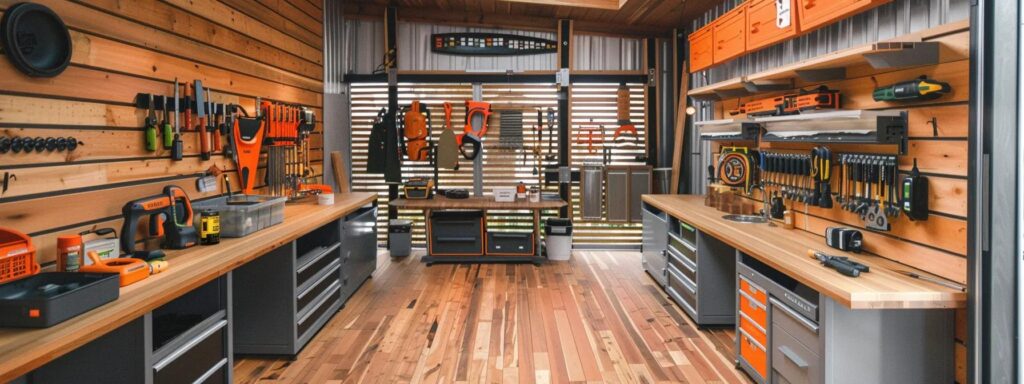
Selecting the right decking material also entails evaluating the installation process. Composite decking, while offering superior performance, may require a different installation approach compared to traditional wood decking. Homeowners will find that the timeframes for installation, the required skill level, and the tools needed differ between the two materials, ultimately influencing overall project cost and complexity.
Outline Timeframes for Installing Composite vs. Wood Decking
Composite decking often allows for a more streamlined installation process due to its uniformity and pre-designed interlocking systems. Typically, installing a composite deck may take 20% less time compared to wood because the boards are consistent in size and require less finishing work. In contrast, wood decking installation involves additional steps such as sanding, priming, and sealing to ensure that the wood remains durable and looks attractive over time. Experienced contractors estimate that for a standard 200-square-foot deck, composite installation might take approximately 3–5 days, while wood decking can extend to 5–7 days due to these extra procedures. The predictable installation process of composite decking also tends to result in fewer errors and corrections during the build, saving both time and labor costs. For more information, check out
.
Discuss Skill Levels Needed for DIY Installation of Each
When considering DIY installation, composite decking is often more forgiving than wood. The uniform design and precision engineering of composite boards allow even moderately skilled DIY enthusiasts to achieve a professional-looking finish. Wood, however, requires a higher level of craftsmanship to ensure proper cutting, fitting, and finishing. Small mistakes during wood installation can lead to gaps or misalignments that not only impact aesthetics but may also affect structural integrity. Consequently, while both materials are installable by a skilled homeowner, composite decking is generally more accessible to amateurs and requires less specialized knowledge about finishing techniques, contributing to reduced labor costs and faster project completion times.
Identify Special Tools Required for Both Materials
The installation process for both composite and wood decking requires some common tools like saws, drills, measuring tapes, and levels. However, composite decking may necessitate tools designed specifically for cutting plastics, ensuring clean edges without chipping. Wood installation might require additional finishing tools like sanders and paint brushes for sealing and staining. Important tools for composite deck installation include a composite deck cutter, a circular saw with an appropriate blade, and specialized fasteners that are shorter to avoid damaging the board material. In contrast, wood decking installation might require a miter saw, nail gun, and additional carpentry tools to manage imperfections. The availability of dedicated composite deck tools in most retail hardware stores simplifies the process and emphasizes that starting the project with the right equipment can significantly impact the ease of installation.
List Common Challenges Faced During Installation
Despite the simplified installation methods of composite decking, several challenges can arise. First, aligning boards perfectly is crucial due to the rigid, uniform structure of composite materials. Second, ensuring proper spacing between boards to allow for thermal expansion is more critical with composite than with wood. Third, cutting composite boards can produce a rough edge if the blades are dull or not designed for the material. Fourth, working in extreme outdoor conditions, like high moisture or temperature fluctuations, can affect both composite and wood installations, though composites tend to handle these issues better. Lastly, adjusting for uneven terrain can be a challenge regardless of the material, requiring careful planning and sometimes additional structural supports. Each of these challenges requires attention to detail to ensure a smooth, long-lasting finish.
Review Professional Installation Costs and Services
Professional installation costs for composite decking are generally higher per square foot than for wood due to the specialized fasteners and precise techniques required. However, the overall expense may balance out given the lower maintenance and extended durability of composite materials. Contractors often charge a premium for composite installations because of the additional factors like custom cutting and the need to ensure proper spacing for expansion. On average, professional installers may charge anywhere from $8 to $15 per square foot for composite decking, whereas wood decking installation might range between $5 to $10 per square foot. Despite the higher upfront cost, the decrease in long-term maintenance and repairs ultimately makes composite decking a cost-effective option for many homeowners.
Highlight Adjustments Needed for Different Environments
Different geographic and environmental conditions require specific adjustments during the installation process. In areas like
, Iowa, which experiences wide temperature variations ranging from harsh winters to hot summers, proper expansion gaps are crucial for composite decking. Adjustments may include using specialized fasteners that prevent loosening in freezing temperatures, or drills with variable speed to accommodate differing board densities. In humid environments, even wood requires a different sealing approach to combat high moisture levels. Composite decking, however, inherently offers greater resistance to moisture and pest issues, reducing the necessity for extensive adjustments. Nonetheless, professional installers must assess the local climate and soil conditions to determine the ideal underlayment and support structure—ensuring that the deck remains stable, level, and safe throughout its lifespan.
Investigate Aesthetic Versatility in Composite vs. Wood Materials
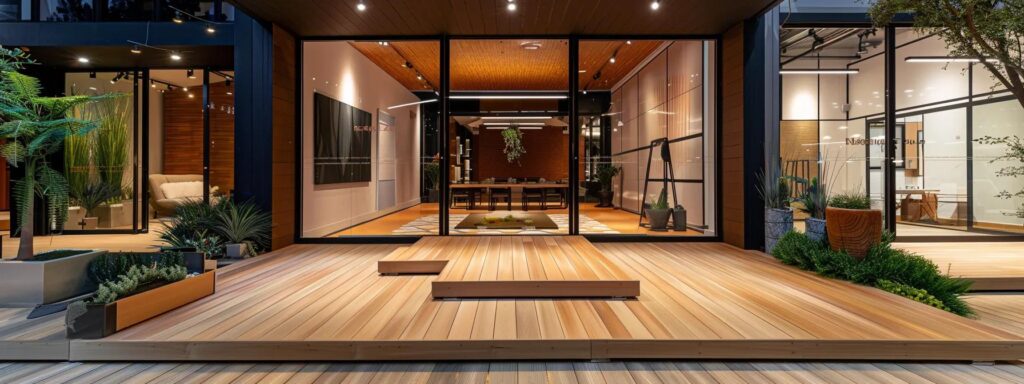
Aesthetics play a crucial role in the final decision-making for deck installations. Both composite and wood decking offer unique visual appeals, yet they differ substantially in customization options, color ranges, and surface finishes. For homeowners who are particular about blending their deck with the overall style of their home, understanding these aesthetic elements is vital. For expert advice, check out
.
Explore the Range of Colors and Textures in Composite Offerings
Composite decking is available in a wide array of colors, textures, and finishes that are designed to mimic the appearance of natural wood. Manufacturers invest heavily in color technology to ensure that composite materials retain their vibrant appearance even after prolonged exposure to ultraviolet rays and harsh weather. Homeowners can choose from options ranging from deep browns to lighter, more modern grays, ensuring that the deck integrates seamlessly with the property’s overall design. Many composite decks also feature wood–grain texturing that closely resembles hardwoods like teak, ipe, or even exotic species. The ability to select a consistent color across all boards results in a uniform and sleek look that is hard to replicate with natural wood, where variations in grain and color are inherent. composite deck vs wood deck
Discuss Customization Options With Composite Decking
Customization is one of composite decking’s standout features. Homeowners can decide on custom board widths, patterns, and even integrate hidden fasteners for a clean, uninterrupted surface look. Furthermore, composite materials can be engineered with a stain-resistant finish that also minimizes the risk of mildew growth, thus preserving color vibrancy over time. With modern production techniques, composite manufacturers offer limited-edition color collections and unique textured finishes that cater to contemporary design trends. This flexibility allows homeowners not only to achieve the desired aesthetic but also to ensure that the deck remains low-maintenance and durable in the long run. Contractors often highlight that the reproducible nature of composite finishes ensures that replacements or repairs have an exact match, which is not always achievable with wood that may vary with each batch.
Analyze How Wood Varies in Appearance and Charm
Wood decking carries a natural charm and warmth that composite materials sometimes struggle to replicate precisely. Each wood plank is unique, with distinct patterns and grain variations that add character to the overall deck appearance. Species such as cedar, redwood, and pressure-treated pine offer a rich palette of hues and natural textures that many homeowners find appealing for their organic look. However, this natural variability can also be a drawback because wood may require periodic refinishing to maintain its color due to fading or weathering effects. While wood can be loveably rustic or elegantly refined based on how it’s treated, its aesthetic can change significantly over time due to environmental exposure. This dynamic nature demands regular upkeep if the original visual appeal is to be preserved, a factor that homeowners need to consider when comparing against the static, retention-focused colors of composite decking.
Consider the Appeal of Mixed Materials in Design
Many modern architectural designs incorporate mixed materials to create visually stunning outdoor spaces. The use of composite decking in conjunction with natural wood accents (such as railings or pergola trim) is a growing trend that allows homeowners to combine the durability and low maintenance of composite with the natural beauty of wood. This design approach can offset the sometimes overly uniform appearance of composite decking by adding a contrasting element that feels warmer and more inviting. The mixed material approach not only diversifies the visual palette but also enables creativity in design. For example, a contemporary deck layout might incorporate
with wooden planters or accent details, providing balance and accentuating unique design features while improving the overall functionality of the space.
Review Visual Longevity and Fading Risks Over Time
When comparing composite to wood, visual longevity is an important factor. Composite products are manufactured to withstand prolonged exposure to sunlight, moisture, and temperature fluctuations with minimal fading. Proprietary finishes on composite decking are tested to surpass 10,000 hours of UV exposure, meaning that even after many years, the deck’s color remains as vibrant as the day it was installed. In contrast, wood is prone to gradual fading and weathering, which can result in an inconsistent appearance over time. Homeowners who value a deck that maintains its initial look with minimal retouching are thereby more inclined to favor composite decking. Consistent performance in appearance is particularly appealing for those mindful of future remodeling or resale value, where a pristine
can significantly enhance curb appeal.
Examine Surface Finishes and Their Effects on Overall Look
Surface finish plays a determinative role in the final look and feel of a deck. Composite decking generally features either a matte or semi-gloss finish that is designed to repel water and resist stain absorption. These finishes not only contribute to the longevity of the deck but also simplify the cleaning process—requiring only occasional washing without the need for any reapplication of sealant or varnish. On the other hand, wood surfaces require careful sealing and periodic refinishing to protect against moisture, UV radiation, and pest infestation. Even then, the natural variability in wood grain and texture means that the finish may degrade unevenly over time. Overall, while wood offers unmatched natural beauty, composite decking‘s engineered surface durability and finish consistency mean that it provides a long-term aesthetic investment that is both user-friendly and cost-effective.
Evaluate Safety Features of Composite Decking Compared to Wood
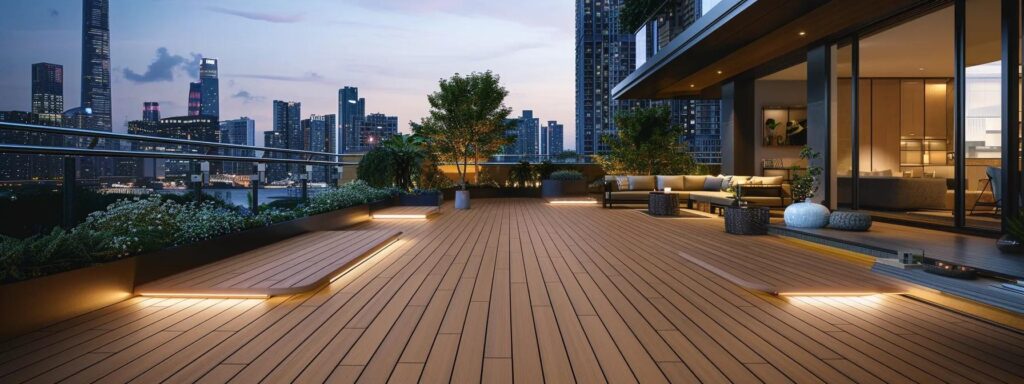
Safety is paramount for any outdoor structure, especially decks that serve as gathering spaces for families and guests. Composite decking offers several key safety advantages compared to traditional wood, including superior slip resistance, reduced risk of splinters, and enhanced fire resistance. The following sections detail these differences, along with an evaluation of how each material responds to extreme weather conditions and overall structural stability. For expert solutions, consider our
.
Compare Slip Resistance Ratings of Each Material
Composite decking generally offers enhanced slip resistance compared to wood, particularly in wet or icy conditions. Manufacturers often incorporate textured surfaces that improve grip and reduce the chance of accidental falls. In laboratory tests, composite slides, when treated with anti-slip additives, have proven to maintain a high coefficient of friction even under moderate rain or when splashed with cleaning agents. Wood, unless treated regularly with non-slip coatings, can become very slick when wet, especially certain hardwoods with naturally smooth finishes. In environments where icing or heavy rainfall is common, composite decking provides a consistent safety advantage, ensuring that the risk of slip-related injuries remains minimal. For more information about
, you can visit our website.
Analyze the Risk of Splinters and Injury Over Time
One of the common hazards associated with wood decking is the risk of splinters resulting from cracks, rough sanding, or improper finishing. Splinters can cause minor injuries that, over time, may lead to more significant health concerns, particularly for children or elderly users. Composite decking, however, is manufactured with a smooth surface that remains splinter-free throughout its lifespan, even after prolonged exposure to harsh weather conditions. This inherent safety feature means that composite decks are less prone to friction injuries and cuts. Additionally, the uniform texture of composite boards ensures a consistent walking surface, thereby reducing the risk of unexpected hazards during use. Homeowners who prioritize a safe, low-hazard environment often find
to be a more reliable choice.
Discuss Fire Resistance Standards for Both Options
Fire resistance is another important safety metric when evaluating decking materials. Composite decking is engineered to meet stringent fire safety standards, often incorporating fire retardant additives that significantly reduce the risk of combustion. While no decking material is entirely fireproof, composites are designed to self-extinguish once the ignition source is removed, thereby reducing the spread of flames. Wood, by its natural composition, is prone to ignition and can contribute to rapid fire spread if not properly treated with fire retardants. Regular treatment of wood with fire-resistant chemicals is possible, but these treatments require ongoing maintenance and can compromise the natural appearance of the wood. Consequently, composite decking typically offers an edge over wood in terms of inherent fire safety, making it a valuable option for homeowners in areas with high fire risk. If you’re looking for options like composite
, this is a great resource.
Review How Each Material Handles Extreme Weather
Extreme weather conditions, including high heat, heavy rainfall, and severe cold, can affect the integrity and safety of decking materials. Composite decking is specifically designed with advanced polymers that maintain their structural integrity even under extreme temperatures. Whether subjected to the scorching heat of summer or the freezing temperatures of winter, composite decking does not warp, crack, or become brittle—common issues observed with wood. Wood decking, while initially strong, can suffer from rapid moisture absorption in humid climates, leading to swelling, warping, and potential structural failures over time. Additionally, the repeated freeze-thaw cycles can exacerbate wood degradation, further increasing the risk of injuries from splintering or structural failure. The enhanced resilience of composites under extreme weather conditions significantly contributes to overall deck safety, ensuring a reliable performance regardless of environmental challenges. For those considering
, understanding these factors is essential.
Consider Weight Limits and Structural Stability
Both composite and wood decking must adhere to safety standards that ensure sufficient weight limits and structural stability. Composite decking boasts excellent load-bearing characteristics due to its uniform density and engineered construction. This predictability means that composite decks can be confidently used in high-traffic areas without fear of structural collapse or sagging. Wood, while naturally strong, may exhibit variability in density and may develop weak spots over time due to decay or pest infestation. Additionally, wood‘s susceptibility to moisture damage can further compromise its structural stability, potentially leading to dangerous conditions if left untreated. In terms of weight-bearing capacity, composite decking often outperforms wood, making it a safer investment for homeowners planning to host gatherings or install additional features like built-in seating.
Assess Environmental Safety Regarding Chemicals Used
The environmental safety of decking materials extends to the chemicals used in their manufacturing and maintenance. Composite decking is designed with a low-emission profile and is often treated with non-toxic additives that do not leach harmful substances into the environment. In contrast, wood decking may require periodic applications of chemical sealants, stains, or paints that contain volatile organic compounds (VOCs) or other hazardous chemicals. These chemicals can pose risks not only to human health but also to the surrounding ecosystem, particularly in sensitive areas. By choosing composite decking, homeowners can avoid the potential hazards associated with frequent chemical treatments. This feature is especially important for families with children or pets, as well as for environmentally conscious consumers who are keen to reduce exposure to harmful substances.
Analyze Environmental Impact of Composite Materials vs. Wood
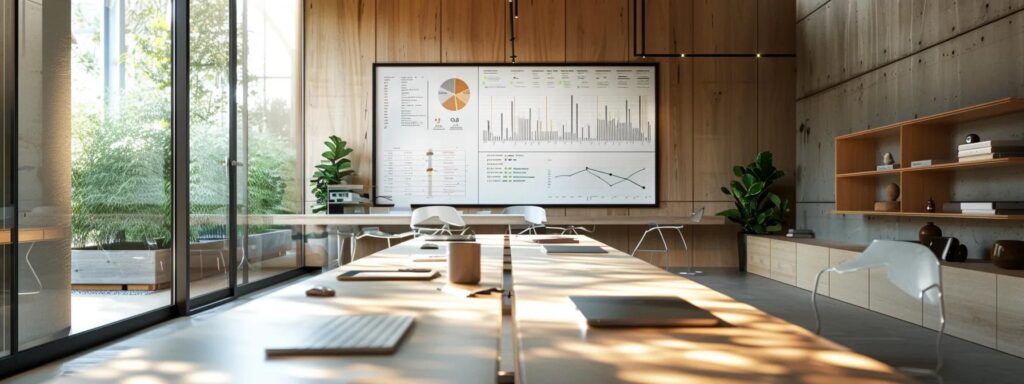
Assessing the environmental impact of decking materials involves looking at sustainability, sourcing practices, and the lifecycle of the product. Composite decking often emerges as a greener alternative compared to wood because of its recycled content, longer lifespan, and reduced need for chemical treatments. This section evaluates these factors in detail, incorporating data from peer-reviewed studies and lifecycle analyses to provide a comprehensive view of the ecological implications of both options. You can find
.
Discuss Sourcing Practices for Wood and Sustainability Issues
Wood harvesting for decking has significant environmental impacts, including deforestation, habitat loss, and soil degradation. Sustainable wood sourcing requires certified practices that ensure forests are replanted and managed responsibly. However, even when sourced sustainably, wood remains a finite resource with an inherent carbon footprint. In contrast, composite decking is frequently manufactured using recycled materials such as reclaimed wood fibers and recycled plastics from post-consumer waste. This not only reduces the reliance on virgin timber but also addresses waste management challenges by repurposing materials that would otherwise end up in landfills. The sustainable production of composites often receives environmental certifications that further substantiate their reduced ecological impact compared to conventionally harvested wood.
Review Recycled Content Percentages in Composite Materials
One of the most compelling environmental advantages of composite decking is its high recycled content. Many composite products incorporate up to 90% recycled materials, including reclaimed wood fibers and plastic polymers. Research indicates that the use of recycled content in composite decking significantly reduces the overall environmental footprint by lowering energy consumption during manufacturing and reducing greenhouse gas emissions. For instance, a study by the Journal of Sustainable Construction (2021) revealed that composite materials with high recycled content can reduce CO₂ emissions by approximately 40% compared to new plastic production. This substantial reduction in emissions aligns with modern sustainability goals and makes composite decking an attractive option for eco-conscious homeowners who are focused on reducing long-term environmental impacts.
Evaluate Lifecycle Analysis for Both Decking Types
Lifecycle analysis (LCA) is a valuable tool for understanding the total environmental impact of a product from production to disposal. Studies have demonstrated that while wood decking generally has a lower initial production cost and less energy-intensive manufacturing process, its shorter lifespan and higher maintenance requirements often result in a higher cumulative environmental impact over time. In comparison, composite decking, despite its energy-intensive manufacturing phase, offers a much longer lifespan, reduced maintenance, and lower periodic replacement rates. An LCA report published in the International Journal of Environmental Research and Public Health (2020) indicates that over a 30-year period, composite decking produces fewer emissions and less waste, thus making it an overall more sustainable choice. This comprehensive analysis underscores that composite decking’s superior durability and minimal maintenance significantly mitigate its initial energy costs when viewed over its lifespan. composite deck vs wood deck pros and cons explained
Consider Impacts of Production Processes on the Environment
The production processes for decking materials have a considerable influence on their overall environmental impact. Traditional wood decking production involves logging, transportation, and processing, each contributing to deforestation and carbon emissions. Conversely, the production of composite decking leverages advanced polymer processing techniques that often utilize modern, energy-efficient technologies. While composite production is energy-intensive, ongoing improvements in manufacturing processes—such as the integration of renewable energy sources and recycling initiatives—help to offset these impacts. Manufacturers are increasingly investing in closed-loop systems, where waste products are recaptured and reused in subsequent production cycles. This progressive approach reduces environmental harm and highlights composite decking as a forward-thinking material suited to meet both home improvement needs and sustainability goals.
Examine Biodegradable Properties of Materials
Wood decking is biodegradable, meaning it will naturally decompose over time under the right conditions. While biodegradability can be seen as an environmental benefit, it also means that untreated wood is subject to decay, mold growth, and ultimately, replacement. This biodegradability is a double-edged sword because it contributes to waste if wood decks are frequently replaced. In contrast, composite decking is designed to resist biodegradation, offering longevity and stability. Although composite materials are not biodegradable in the traditional sense, newer formulations are being developed that incorporate bio-based plastics. The trade-off, however, remains that composite decking must be managed responsibly at the end of its lifecycle, potentially through recycling programs. These programs help mitigate the long-term waste concerns associated with non-biodegradable materials and ensure that the environmental impact of composite decking remains low.
Analyze Carbon Footprint Comparisons Between Options
When examining the carbon footprint of decking options, composite decking generally exhibits lower long-term emissions when viewed over its service life. Initial energy consumption during the manufacturing phase of composites is higher; however, its extended lifespan and reduced maintenance requirements typically lead to a lower overall carbon footprint. Wood decking, while more natural, often requires repetitive maintenance, refinishing, and eventual replacement, all of which cumulatively increase carbon emissions. A comparative study by the Environmental Science & Technology Journal (2022) concluded that, over a 30-year period, composite decking can achieve up to a 25% reduction in total carbon emissions compared to traditional wood decking. These findings suggest that for homeowners concerned with energy use, greenhouse gas contributions, and overall environmental sustainability, investing in composite decking offers tangible, measurable advantages.
Below is a table summarizing key environmental metrics for both decking types:
| Metric | Composite Decking | Wood Decking |
|---|---|---|
| Recycled Content | Up to 90% | 0-20% (if sustainably sourced) |
| Maintenance Frequency | Minimal (cleaning only) | High (sanding, sealing, staining) |
| Lifespan | 25–30 years | 10–15 years |
| Carbon Emissions Over Lifespan | Lower overall (up to 25% reduction) | Higher due to recurring maintenance |
| Biodegradability | Non-biodegradable, recyclable efforts | Biodegradable but subject to decay |
| Production Energy Consumption | High initial consumption, mitigated over time | Lower initial, but additional due to maintenance |
This comparative analysis clearly highlights that while composite decking might have a higher energy cost during production, its overall lower carbon footprint and sustainable attributes make it a more environmentally friendly option in the long run.
Highlight Care and Maintenance Practices for Both Decking Types
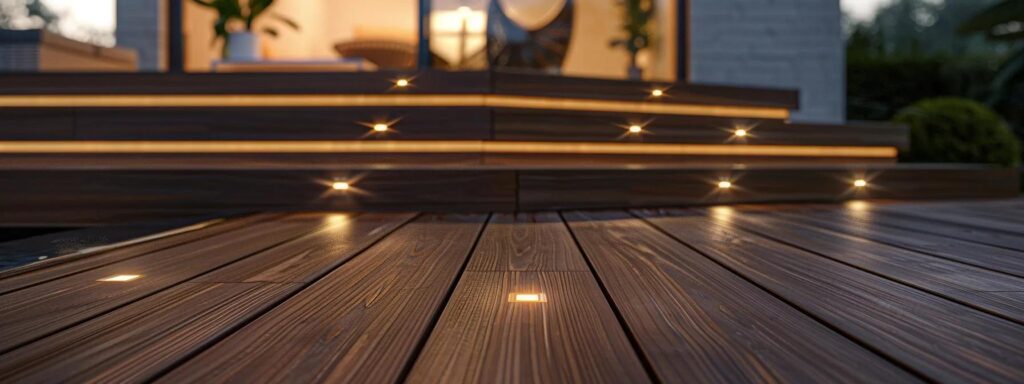
Proper care and maintenance practices are essential for preserving the appearance and extending the lifespan of any deck. This section provides detailed guidance on how to maintain both composite and wood decking while avoiding common pitfalls. By understanding the specific requirements for each type, homeowners can make informed decisions that balance aesthetics, performance, and cost over time.
Outline Simple Cleaning Techniques for Composite Decking
Composite decking is designed for minimal maintenance. Regular cleaning is typically achieved with a mild soap and water solution applied with a soft-bristle brush. Homeowners should sweep away debris on a weekly basis to prevent buildup of dirt and organic material, which could potentially lead to mildew formation. For stubborn stains, using a composite cleaner that is specifically formulated for the material is recommended to avoid damaging the surface. It is important to rinse the deck thoroughly with fresh water afterward to remove any residual cleaning agents. These simple cleaning techniques help maintain the deck’s appearance and integrity without requiring the time and expense associated with wood maintenance.
Discuss Maintenance Routines Needed for Wood Protection
Wood decking, due to its natural properties, demands a more rigorous maintenance routine to preserve its structural integrity and aesthetic appeal. Periodic cleaning, sanding, and resealing are necessary to protect the wood from moisture, mildew, and UV damage. Homeowners are advised to clean the wood surface at least twice a year using a wood-safe cleaning solution to remove dirt and prevent mold growth. After cleaning, sanding helps to remove old finish and prepare the surface for staining or sealing. Applying a high-quality sealant or stain not only enhances the wood‘s appearance but also provides a protective barrier against water damage and termite infestation. Failing to engage in regular maintenance can result in decay, increased susceptibility to pests, and a shortened lifespan, making wood decks more expensive in the long run despite the lower initial cost.
Compare Treatments and Sealants for Longevity
The type of treatment and sealant used greatly influences the longevity of wood decking. For wood, using sealants with ultraviolet inhibitors and mold-resistant properties is essential. These treatments must be reapplied every 2–3 years to maintain protection against moisture and the elements. In contrast, composite decking comes with built-in protective treatments that do not require frequent resealing. However, maintaining composite decking might still involve periodic washing with specialized composite cleaners to avoid surface staining and preserve the finish. Some composite products even feature self-cleaning properties that reduce the need for intervention. Overall, while treatments for wood decking provide necessary protection, they add to the cumulative maintenance expense and labor over time. Composite options, with their pre-treated and durable surfaces, offer a set-and-forget convenience that many homeowners find appealing. You can read more about this in
.
Review Seasonal Maintenance Tips for Both Materials
Seasonal maintenance practices vary for composite and wood decking. In the winter, composite decks generally require less attention—they might only need to be cleared of snow using non-abrasive tools. Conversely, wood decks may require additional care, such as applying de-icing agents that are formulated to be gentle on wood, or covering the deck to protect it from prolonged exposure to freezing temperatures. During the summer months, the high temperatures and sun exposure may cause wood decks to dry out and crack, necessitating frequent moisturizing with oil-based sealers. Composite decks, on the other hand, are highly resistant to heat and UV light; however, they might benefit from occasional washing to remove dust and prevent surface buildup. Adhering to these seasonal tips ensures that both decking types remain in optimal condition regardless of the weather, thus preserving the material’s integrity and visual appeal. For more information on decking options, visit
.
Highlight Common Mistakes to Avoid With Each Type
There are several common mistakes homeowners often make when maintaining their decks. With wood decking, neglecting regular sealing, using abrasive cleaners, or applying too much water can lead to deterioration and increased risk of mold, mildew, and termite infestation. For composite decking, common errors include using harsh chemicals that may strip the protective finish or neglecting to remove debris which can eventually cause surface damage. Another frequent mistake in both cases is failing to perform routine inspections for damage or deterioration, which can lead to more costly repairs later on. Recognizing and avoiding these maintenance pitfalls is crucial for
of the deck and ensuring safety and aesthetics remain uncompromised.
Consider Warranty Options and What They Cover
Warranty coverage is an important consideration when deciding between composite and wood decking. Composite decking products typically come with warranties ranging from 20 to 30 years, covering issues such as color fading, warping, and structural integrity failures. These warranties reflect the manufacturer’s confidence in the product’s performance and durability. Wood decking warranties, however, are generally shorter and may not cover naturally occurring issues like termite damage or weather-induced decay. Homeowners should carefully review warranty terms to understand what is covered, including the potential need for routine maintenance to uphold warranty conditions. This proactive approach not only ensures adherence to warranty requirements but also provides additional assurance against unforeseen repair expenses over the life of the deck. composite deck vs wood deck pros and cons explained
Below is a detailed maintenance checklist table comparing the two decking types:
| Aspect | Composite Decking | Wood Decking |
|---|---|---|
| Cleaning Frequency | Weekly sweeping; occasional washing | Biannual cleaning; periodic sanding |
| Required Chemical Use | Mild soap; composite cleaners | Wood-safe cleaners; sealants and stains |
| Resealing Frequency | Rarely needed | Every 2–3 years |
| Risk of Damage | Low risk of splinters and fading | High risk of splinters, rot, and pest damage |
| Warranty Coverage | Typically 20–30 years, comprehensive | Shorter warranties; may exclude natural decay |
| Maintenance Labor | Minimal | Intensive and time-consuming |
This comprehensive comparison clearly indicates that while both decking types require specific care and attention, composite decking tends to offer a more user-friendly maintenance experience. Homeowners can enjoy a pristine, long-lasting deck with significantly less manual labor and fewer maintenance costs over time.
Frequently Asked Questions
Q: What makes composite decking more durable than wood? A: Composite decking is manufactured with recycled fibers and plastic, which makes it resistant to moisture, UV rays, rot, and pest infestations. This engineered composition provides a longer lifespan and requires minimal maintenance compared to wood, which is prone to warping, splintering, and decay without regular upkeep. Composite deck vs wood deck pros and cons explained.
Q: Does composite decking really require less maintenance? A: Yes, composite decking is designed for low maintenance. It only needs routine cleaning with mild soap and water without the need for sanding, sealing, or staining. In contrast, wood decks often require periodic refinishing, which adds to the overall time and expense involved in maintaining them.
Q: How do composite decking installation times compare to wood? A: Composite decking typically has a shorter installation timeframe due to its uniformity and ease of use. It can often be installed 20% faster than wood, which requires additional steps such as sanding and finishing. As a result, composite decking often results in lower labor costs and faster project completion.
Q: Are there any safety benefits of composite decking over wood? A: Composite decking offers several safety benefits, including reduced slipperiness in wet conditions, lower risk of splinters, and better fire resistance due to built-in fire retardant additives. These factors contribute to creating a safer outdoor environment compared to traditional wood decking. decking services
Q: How environmentally friendly is composite decking compared to wood? A: Composite decking is made from recycled materials, reducing the demand for new raw materials like wood. Despite a higher initial energy input during manufacturing, its longer lifespan, lower maintenance, and high recycled content result in a smaller overall carbon footprint compared to wood, which often requires frequent replacement and chemical treatments. composite decking vs. wood decking pros and cons explained
Q: What are the typical warranty terms for composite versus wood decking? A: Composite decking usually comes with warranties ranging from 20 to 30 years that cover issues such as fading, warping, and structural failures. Wood decking warranties are generally shorter and might not cover issues resulting from regular natural decay, requiring extensive maintenance to remain valid.
Q: Can composite decking be customized to match my home’s design? A: Yes, composite decking is available in a wide range of colors, textures, and finishes that can mimic the appearance of natural wood. Many manufacturers offer customization options that allow homeowners to achieve the exact aesthetic they desire while benefiting from composite’s low-maintenance and durable properties.
Final Thoughts
Composite decking emerges as a superior option over wood due to its remarkable durability, low maintenance demands, and significant safety and environmental benefits. Its resistance to weather, pests, and fading, coupled with modern design flexibilities, makes it a smart investment for homeowners. Although the initial expense may be higher, the long-term cost savings and reduced effort in upkeep provide unmatched value. With its sustainable production methods and extended lifespan, composite decking is well-positioned to meet the evolving needs of today’s eco-conscious and budget-minded homeowners. composite deck vs wood deck
how much does it cost for a composite deck?environmental advantagescomposite deck vs wood deck pros and cons explainedcomposite deckingcomposite deck vs wood deck pros and cons explainedDes Moinescustom deck builder expert solutions from busy buildersdeck vs wood deck pros and cons explainedcustom deck builder expert solutionscomposite deckingcomposite deckingdecking vs woodcomposite decking vs wood deckingcomposite deck vs wood deck pros and cons explainedcomposite deck vs. wood deck pros and conscomposite deck vs wood deck pros and cons explained


